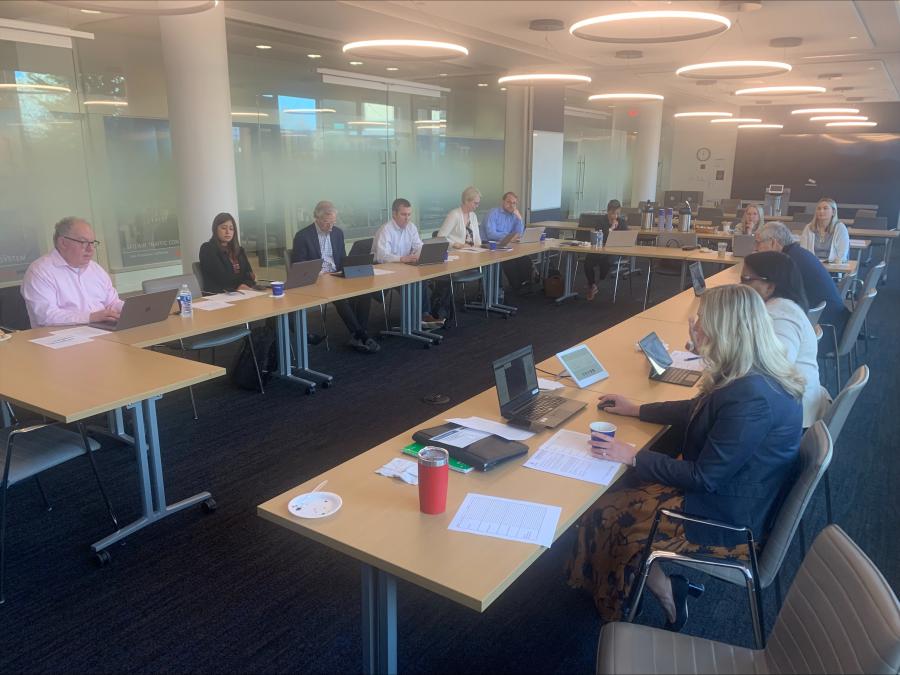Frank Lenk, MARC’s director of Research Services, recently presented a demo of the Economic Equity Values Atlas to the KC Rising Place Advisory Committee at the HNTB offices in downtown Kansas City, Missouri. During the meeting, committee members had the opportunity to conduct a hands-on exploration of the tool and understand potential applications.
The Economic Equity Values Atlas maps the strength of KC Rising's seven Pillars of Prosperity across the multitude of communities that comprise the Kansas City region. In addition, it maps the location of the resources people need to live – jobs, housing, incomes, transportation, internet, health, education – in relation to the different populations that make up the region, providing clear visualizations of the extent to which inequities in access exist. These visualizations can help evaluate the extent to which the location of current and planned public and private investments might increase these inequities or, instead, help to create a regional economy that grows for everyone.
The committee is looking for ways to promote the use of this tool for more informed data-based decision making.
KC Rising is a regional initiative formed in 2015 to grow an inclusive economy faster and more intentionally. The Place Advisory Committee works to advance a vision of regional prosperity as it focuses on attainable housing, effective and accessible transportation, and equitable internet access.
The Brookings Metropolitan Policy Program and local partners in Portland, Oregon, developed the atlas concept and technology. MARC participated in a pilot of the tool in 2020 as part of a cohort of three metropolitan areas with the purpose of increasing alignment around the goal of shared prosperity.
In addition to the Economic Equity Values Atlas demo, Selina Zapata Bur, a principal transportation planner with MARC, presented MARC’s transit access performance measure to the committee. Transit accessibility is a voluntary performance measure that assesses progress toward a regional goal to increase the percentage of the population and jobs with access to adequate levels of transit service.
In 2022, MARC staff took a fresh look at its transit-related measure with the intent of simplifying the methodology and making it easier to understand and study in relation to other factors such as jobs, disadvantaged populations, and transit-dependent populations.







